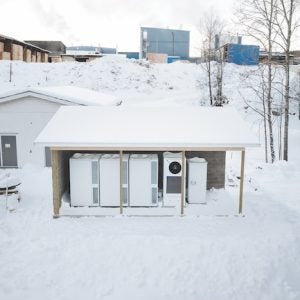
Gravitricity’s GraviStore is an innovative gravity energy storage system that raises and lowers heavy weights in deep shafts – combining some of the best characteristics of lithium-ion batteries and pumped hydro storage, at low cost, and without the need for any rare earth metals. It is envisaged that future GraviStores will have energy storage capacities of more than 20 MWh, providing long-duration storage and rapid power delivery.
Unlike batteries, the Gravitricity system can operate for decades without any reduction in performance. Gravitricity has already proven the system with a small scale demonstrator and is exploring the potential to deploy its technology in decommissioned mines worldwide.
With an installed base of more than 1000 hoist systems worldwide, ABB will bring to the collaboration, R&D, product development and engineering teams specialising in mine hoists and mechanical, electrical and control technologies for hoisting.
“We are already seeing significant interest from mine operators in Europe, India and Australia and this partnership with ABB – with decades of electrification and mine hoist system expertise – will help us accelerate our ambitious commercialisation plans”, said Martin Wright, Gravitricity’s co-founder and Executive Chairman.
ABB sees the MoU as an important step in its “ambition to further develop its lifecycle service business by collaborating with companies providing adjacent and value-adding technologies.”

“ABB has 130 years of history with mine hoists, since we first electrified one in Sweden in the 1890s,” notes Charles Bennett, Global Service Manager, Business Line Hoisting, ABB Process Industries. As well as mine hoist expertise, ABB will also offer mining industry consultation and work to identify suitable sites and shafts for the deployment of GraviStore.
By repurposing disused mine shafts for energy storage, they can be used productively for up to 50 years beyond their original lifetime, thus mitigating decommissioning costs.
Gravitricity says it has an expanding portfolio of intellectual property in underground energy storage including eight granted patents and a further two pending.






